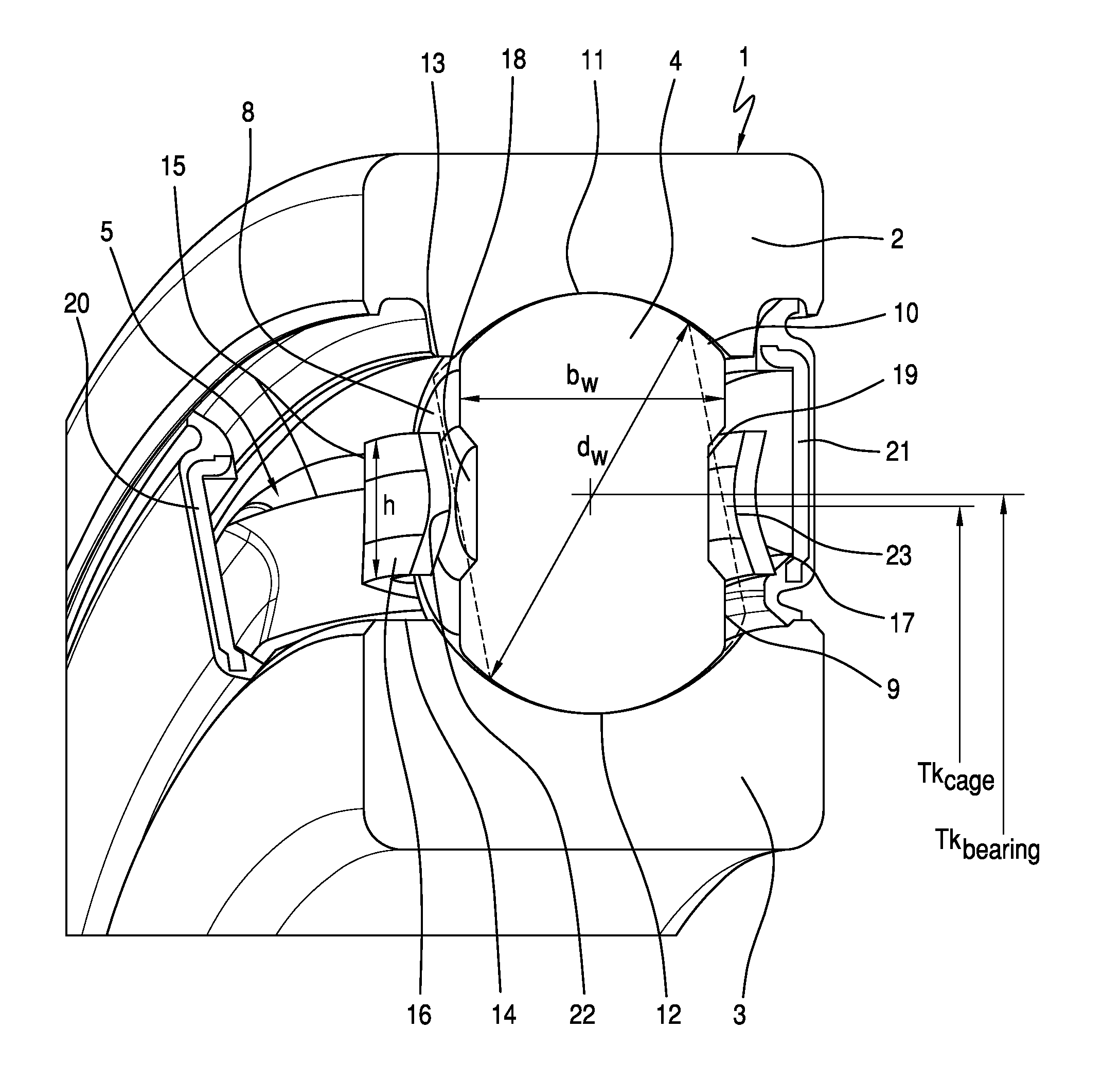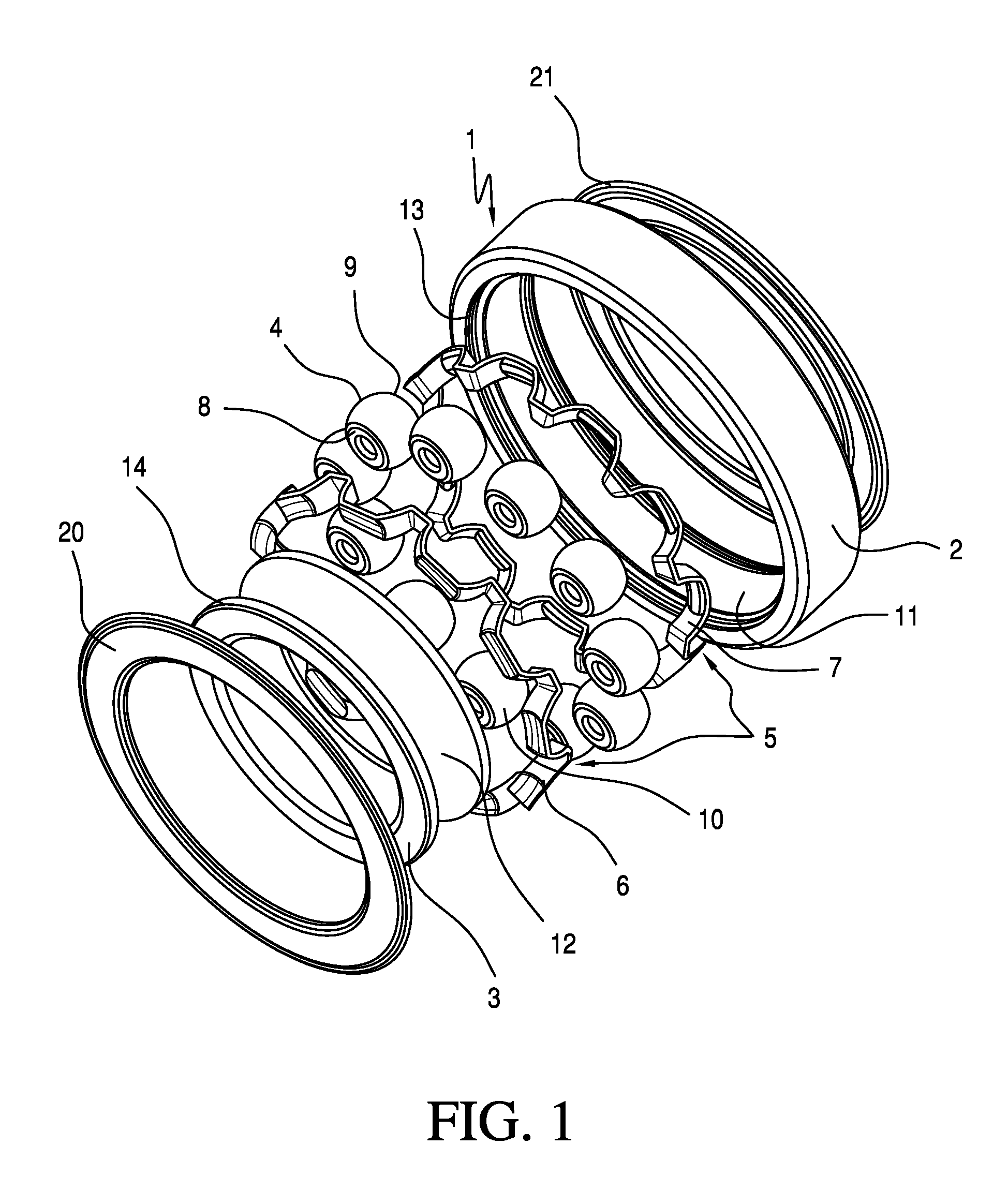Radial rolling bearing, especially single-row deep groove rolling bearing
a technology of deep groove ball bearings and rolling bearings, which is applied in the direction of sliding contact bearings, rigid support of bearings, mechanical equipment, etc., can solve the problems of bearing cage destruction, bearing cage destruction, and bearing cages that are unsuitable for special rolling bodies, etc., to achieve cost-effective, low overall production costs, and cost-effective purchasing
- Summary
- Abstract
- Description
- Claims
- Application Information
AI Technical Summary
Benefits of technology
Problems solved by technology
Method used
Image
Examples
Embodiment Construction
[0007]According to the invention, said object is achieved with a radial rolling bearing in that the bearing cage has individual cage pockets for each rolling body, which cage pockets surround said rolling bodies on a pitch circle line and in which the rolling bodies, by means of at least two low-friction lines of contact between their side surfaces and the longitudinal webs of the cage pockets, firstly have axial guidance between the bearing rings and secondly are formed with a defined degree of freedom for self-alignment to the pressure angle of the radial rolling bearing.
[0008]Preferred embodiments and advantageous refinements of the radial rolling bearing embodied according to the invention are described in the subclaims.
[0009]Preferably, central depressions are formed into the side surfaces of the rolling bodies, which provide an additional lubricant reservoir for the radial rolling bearing. Said central depressions are preferably formed in the manner of circular flat recesses, ...
PUM
 Login to View More
Login to View More Abstract
Description
Claims
Application Information
 Login to View More
Login to View More - R&D
- Intellectual Property
- Life Sciences
- Materials
- Tech Scout
- Unparalleled Data Quality
- Higher Quality Content
- 60% Fewer Hallucinations
Browse by: Latest US Patents, China's latest patents, Technical Efficacy Thesaurus, Application Domain, Technology Topic, Popular Technical Reports.
© 2025 PatSnap. All rights reserved.Legal|Privacy policy|Modern Slavery Act Transparency Statement|Sitemap|About US| Contact US: help@patsnap.com



